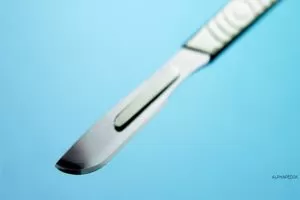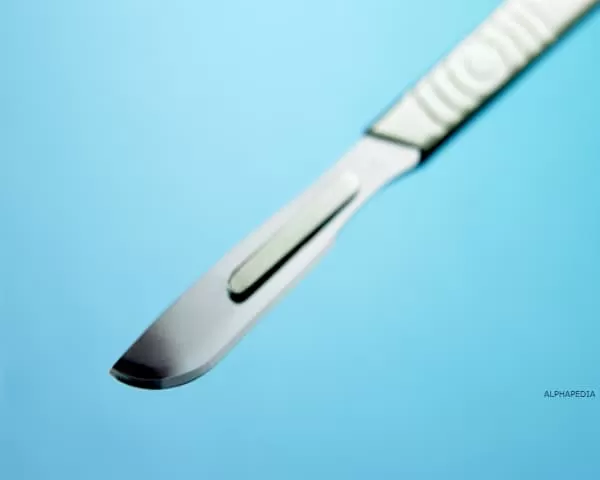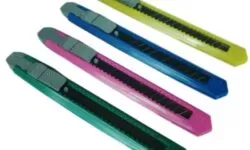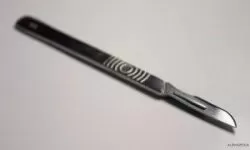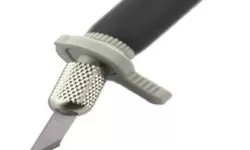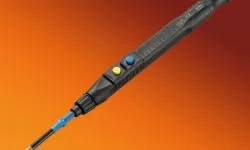The Surgical Scalpel, the Surgeon’s Ideal Tool
The surgical scalpel is used to cut the skin and tissue during surgical procedures. A surgical scalpel usually consists of two complementary parts: the handle and the blade.
You’ll hear the handle called the “BP handle,” named after Charles Russell Brand and Morgan Parker, who patented the two-piece design in 1915. They realized that the use of heat during the sterilization process actually clouded the blades. Then, they also developed a cold sterilization process that would protect the sharpness of the blade.
The numbering system goes back to Morgan Parker, who numbered the handles from 1 to 9 and assigned the surgical blades a number from 10 to 20. Surgical blades are often purchased separately from the surgical blade handle. The surgeon selects the best surgical blade handle for the procedure.
Surgical blade handles vary in size, weight, and length to provide the surgeon with optimal precision, balance, and visibility. The surgical blade handles come in different versions ranging from #3 to #9. #3 and #4 have a long, flat handle.
The handles of the blades n. 5, n. 6 and n. ° 8 have a wider base. No. 7 is shaped like a thin, rounded pencil on the front and flat on the back. Handle #9 is longer and thinner. The surgical blades come in complementary sizes, each designed to fit a specific handle size only.
There are different types of blades specific to the type of procedure. Surgical blades vary by size and shape. The blade number indicates the size and shape of the blade. Surgical blades are typically made of stainless steel or carbon steel.
Surgical blades are vitally important and must meet the highest standards of excellence. These blades require a great deal of sharpness to effectively cut human tissue. In an operating room environment, the right surgical tools, ranging from instruments to surgical lighting, can be as critical as the experience and techniques of your surgical teams.
Having the right surgical scalpel blades for specific procedures can make a big difference in the success of the surgical team and ensure the best possible outcome for patients. This is particularly true for minimally invasive surgery, as well as for ophthalmic, cardiovascular and endoscopic procedures. The precision of the surgical blades plays a fundamental role in any successful surgery.
Depending on the type of surgery or procedure, the collective surgical experience of your team, and the physical design of the operating room, different types of blades have different advantages. Each surgical blade is numbered to indicate its size and shape; think of it as an abbreviated code to label the characteristics of a blade.
Surgical blades come in sterile containers and the number on a surgical blade communicates both its size and shape. Surgical blades are available in disposable scalpels (sterile and non-sterile). The most common type of scalpel blade used in surgery is the replaceable, non-fixed blade. This type of blade has a wrench-like groove in the angled base that securely secures the scalpel blade to the scalpel handle. The scalpel handle is “armed” or “disarmed” by sliding the end of the handle into or out of the slot.
Related Topics
Other Laboratory Materials and Instruments in ALPHAPEDIA

WHAT IS A CAPILLARY TUBE ?
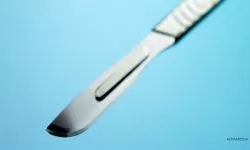
SCALPEL MEANING
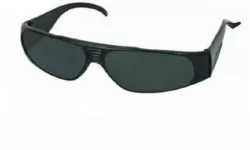
TYPES OF SAFETY GLASSES
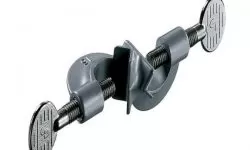
LAB STANDS DOUBLE TOP WIRE CLAMPS Function
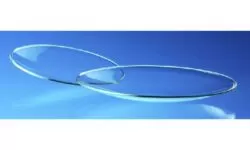
WATCH GLASS USE

CAMRY SCALE: Prices and Reviews on Amazon
Other Topics of Interest in ALPHAPEDIA

FREE DOCTORATE IN INTERNATIONAL BUSINESS

FREE NATUROPATHY COURSE

HOW LONG IS A DOCTORATE DEGREE PROGRAM ?

FREE MINDFULNESS COURSE

FREE BIG DATA COURSE

FREE DRUMMING COURSE
Image of SURGICAL SCALPEL
